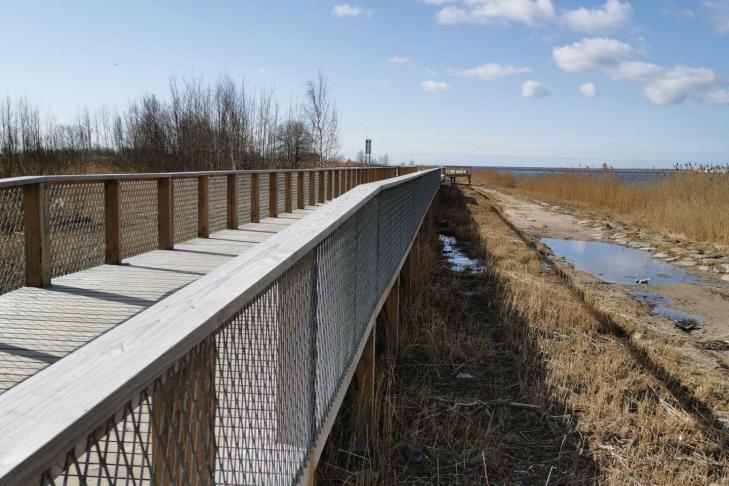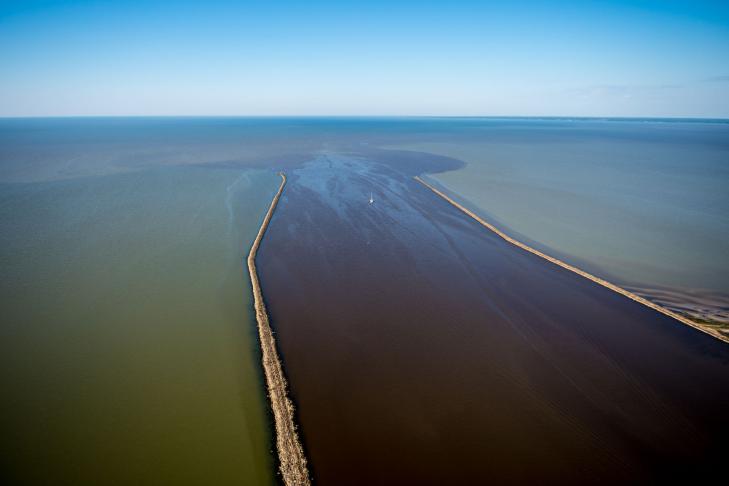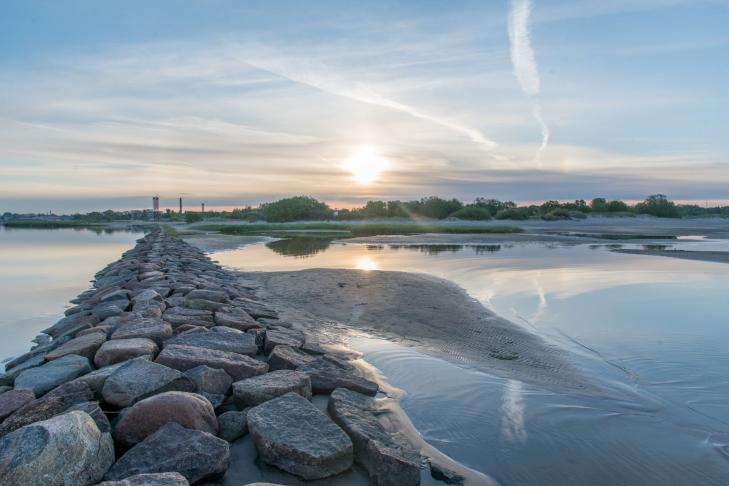Overview
The mole of Pärnu is one of the most interesting sights in the city. The mole (often also referred to as the Jetty of Pärnu*), which was built to deepen the port and revive trade, will be 152 years old this year.
At the beginning of 2019, a new illuminated boardwalk was completed, starting at the Rannapark and winding along the Pärnu River. The half-kilometer-long light road built on the piles ends at a sandy beach near the mole. There are seating benches and bicycle racks on the trail. The new boardwalk quickly became a very popular walking spot for locals, so we recommend all visitors to find their way there!
When you reach the mole, be careful because the stones can be slippery!
Interesting facts:
- from time to time, the whole mole can be left under the water
- when the water levels are low, the top parts of old wood pulp posts can be seen
- the bottom of the 7-meter-wide mole is nearly 26 meters wide and its depth is up to 5 meters
- according to an ancient legend, young lovers have to walk to the end of the mole and seal their love with a kiss there.
- *A jetty is a structure extending perpendicularly from shore and is a solid wall down to the waterbed, with the purpose of obstructing the flow of currents. A large jetty built to create an artificial harbor is called a “mole.” Jetties in pairs often flank either side of a river as it enters the sea or lake, to prevent silting at the mouth.
History of the mole
In the Middle Ages there was no sea port in Pärnu. That is why cargo meant for the ships had to be transported with barges. The major obstacle to the development of sea trade was the settling of sand at the estuary of the river. At the request of the major merchants in Pärnu, it was ordered by the Russian Empress Catherine II to set up moles to prevent it.
At the beginning of the 19th century, the oak beams were rammed into the river estuary. However, after their disintegration, the construction of more permanent stone moles began. The cornerstone was solemnly placed in 1863 by Baron von Lieven, Governor General of Estonia and Livonia.
Work began in winter when Pärnu Bay was covered by thick ice. The dimensions of the moles were marked on the ice, and the mats weaved from the birch beams were carried and spread over the ice over the entire mole area. The stones were then brought from the fields and the newly demolished city walls of Pärnu. The stones were also transported from the beaches of Häädemeeste and Kihnu. In spring, rocks drifted off the seabed as the ice melted.
Several years of construction work were very lucrative for nearby farmers who brought larger and smaller stones from their fields. The word spread even to the seamen of Kihnu and Riga – and in the summer, material was brought to the mole, which was sunk from the ships. Light beams were built at the ends of the stone walls of the mole to facilitate the entrance of the ships by night.
Construction work ended in 1869 and thus the rise of sea trade in Pärnu started. At that time, mainly timber and flax were transported from Pärnu.
 LT
LT
 LV
LV
 EE
EE
 EN
EN
 DE
DE
 PL
PL




